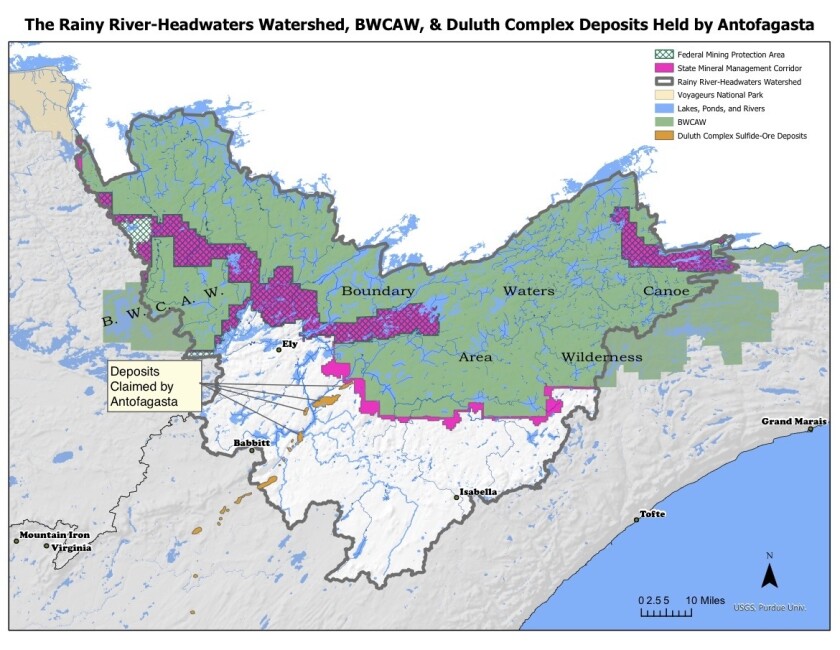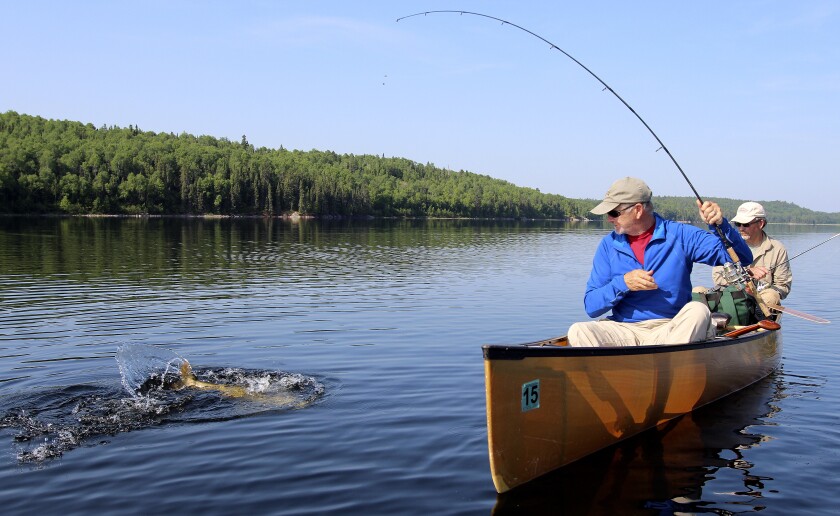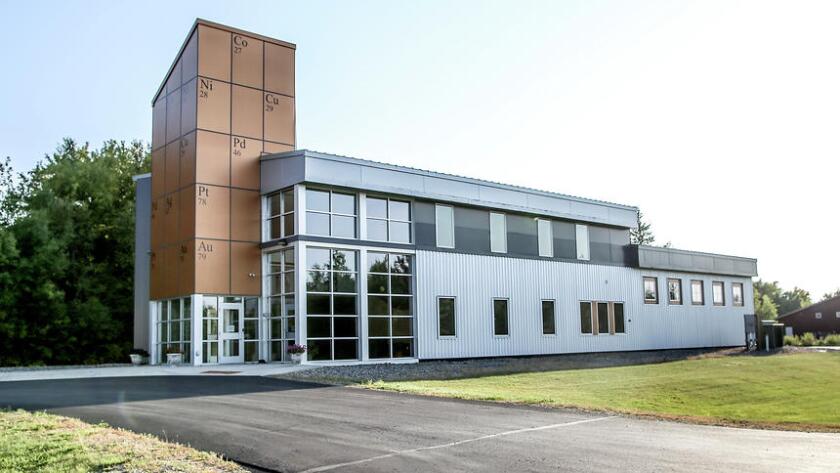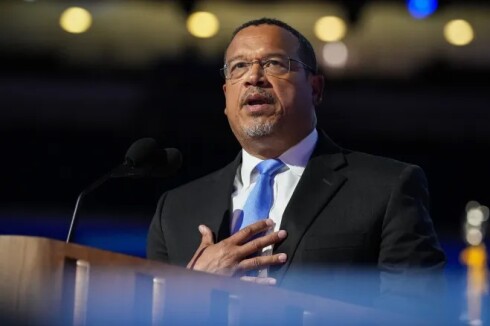Editor’s note: This is Part 3 of 5 in a series examining how the upcoming presidency of Donald Trump may impact Greater Minnesota.
ST. PAUL — Minnesota could see its most significant environmental impacts from President-elect Donald Trump’s push for mining as he proposes sweeping changes to clean energy and environmental laws.
ADVERTISEMENT
Here’s how the state’s central environmental goals, like carbon-free electricity by 2040, nuclear moratoriums and mining bans, might be impacted during his second term.
Mining under the microscope
At a July campaign rally in St. Cloud, Trump said he would open up copper mining in Minnesota “in 10 minutes.”

Trump’s campaign website also outlines plans to “unleash” natural resources in the U.S. and specifically calls attention to targeting the Midwest, recently tapping North Dakota Gov. Doug Burgum as a potential pick to lead the Department of the Interior.
Chris Anderson, born and raised in Ely, Minnesota, a Bois Forte Band member and former legal director for Twin Metals, said nobody is cheering the outcome of the presidential election more than Twin Metals and Rep. Pete Stauber, a Republican who represents Minnesota’s 8th District.
Twin Metals, a mining company that started in the early 2000s, plans to mine underground copper, nickel and precious metals in Minnesota but has not started mining due to hurdles created by environmental concerns.
Anderson said he joined Twin Metals during the Obama administration, when the project first lost its leases. He said he watched as the leases were reinstated by Trump and put back on hold by President Joe Biden.
“As the political winds kind of shifted, especially with the Biden administration coming in, that domino effect came in with numerous decisions that basically gummed up the project … it’s been basically treading water,” Anderson said. “The outcome of the federal election clearly benefited Twin Metals, because that outcome basically is the lifeline that they needed to continue with the project.”
ADVERTISEMENT

Twin Metals focuses on the minerals within the Maturi deposit in the northeast part of the state. According to Twin Metals’ website, the Maturi deposit is one of the largest undeveloped deposits of these minerals in the world and holds 4.4 billion tons of ore containing copper and nickel.
State Rep.-elect Cal Warwas, R-Clinton Township, a third-generation steelworker, iron and taconite miner, said expanding mining projects like Twin Metals located near legislative District 7B are vitally important to his district.

“My district is very mining-centric,” he said. “There’s more mining in 7B than anywhere else in North America that I’m aware of. So, that’s a very, very big deal, because the money that will flow from that ... is going to support schools all across Minnesota through school trust lands. That’s going to be huge. It’s also going to revitalize this region.”
Twin Metals released a compilation of studies from organizations including the Department of Employment and Economic Development and the Bureau of Business and Economic Research showing some of the economic benefits — including state royalty revenues of $156 million, $3 billion to support education and 750 new jobs — created by the proposed mine.
John Spry, Minnesota economist and professor at the University of St. Thomas, said the economic boost may not be as large as anticipated, and existing copper mining economies would likely process the metals outside Minnesota.
“It’s not going to be a gigantic boom that’s notable, noticeable, like what North Dakota had with the western North Dakota advances in the hydraulic fracking,” Spry said, adding that it could be in the country’s and Minnesota’s best interest to look at mining elsewhere. “You do the mining here, right? You put the environmental risk on Americans. Probably better for the world’s environment, but worse for Minnesota.”
Minutes or months
Ingrid Lyons, executive director of Save the Boundary Waters, said the “10-minute” claim is an exaggeration of Trump’s capabilities, but her organization is anticipating anything.
ADVERTISEMENT
“Trump is not allowed to sign an executive order on day one getting rid of the mining ban,” Lyons said. “That’s not how the process works under normal procedure. It is the Secretary of the Interior who would lead on the revocation of a mining ban.”
Anderson said overturning the ban won’t be an easy feat for Trump — it could take years for him to repeal.
“Even if the Trump administration reverses the mining ban and reinstates the leases, you’re just going to have the environmental groups come right back in, refile their lawsuits, and this whole tennis match regarding the validity of the leases is going to continue in the courts,” he said.
Gov. Tim Walz, in an unrelated press conference on Nov. 26 at the state Capitol, addressed ongoing debates around Minnesota mining.
“If it meets the environmental standards, if it meets what was asked of it, if it meets the permitting processes both federal and state wanted, then you should mine it. If it doesn’t, you should not,” he said. “That’s been our position from the beginning.”
What about clean energy and Minnesota’s environmental goals?
Lyons said the mining danger comes from sulfide ore, the rock that contains copper. She said when this rock is brought to the surface and exposed to air and water, it creates a chemical reaction that produces acidic runoff, which can cause harmful metals to leak out of the waste rock.

Lyons said this could destroy the water source that is the Boundary Waters Canoe Area Wilderness, not only hurting wildlife but also creating a ripple effect on the water supply, fish supply, tourism and real estate.
ADVERTISEMENT
“These waterways flow directly into the Boundary Waters, and so we’re talking about creating a copper mining district in extremely close proximity to the wilderness (and) central waters that flow into it,” she said. “This is a problem, because so far, copper mining has been found by the EPA to be the most polluting industry in America.”
Warwas said that since this mining is modern and done underground, it won’t affect the Boundary Waters.
“People need to focus on the differences between the types of mining we’ve done in the past and what’s being proposed,” he said. “Twin Metals’ project is an underground project, and so the actual footprint of what we do as a region will be very small. The precious metals mining that’s designed to be underground is all targeted. It’s all core drilled. They know where the minerals are, and so they would be basically building corridors to those metals.”

Anderson said the debate about its safety hinges on the fact that this kind of copper mining has never been done before.
“The problem for Twin Metals is that it’s a brand new way of mining,” he said. “Twin Metals is saying, ‘Yes, just follow the science, give us the rules that you need us to abide by, and we’ll show you how our project can meet those standards.’ And the environmental groups are saying, ‘Yeah, but, here we’re writing potentially new rules for an unknown mining method.’ ... That is very hard to do when the testing ground is a treasured national park and a sacred ecosystem to two tribal communities.”
Also central to Minnesota’s environmental conversations are some of its clean energy policies, like the Carbon-Free by 2040 law, which requires the state’s electric utilities to provide carbon-free electricity by 2040.
Allen Gleckner, lead of policy and programs for Fresh Energy Minnesota, said the Inflation Reduction Act, passed in 2022, has been a point of discussion for clean energy under Trump and a major driver of clean energy investment projects like Carbon Free by 2040 in Minnesota. The Inflation Reduction Act includes tax credits and incentives for renewable energy sources like wind and solar and energy storage and support for emerging technologies such as hydrogen.
ADVERTISEMENT
Trump said he will “rescind all unspent funds under the misnamed Inflation Reduction Act,” Politico reported in September.
“The tax credits for wind, solar, storage, that kind of stuff, you know, will certainly have an impact on cost for those technologies in Minnesota,” Gleckner said. “But even with changes to the IRA, I wouldn't expect that there would be a dramatic shift in approach for clean energy in the state, or meeting our 100% law.”
The IRA also includes the Justice 40 initiative, which directs 40% of climate-related investments to disadvantaged communities, including areas that historically relied on coal and fossil fuel industries, such as Becker and Hibbing, where two of Minnesota’s power plants are located.
Gleckner said one other area of Minnesota’s environmental law that could be impacted by federal policy is Minnesota’s vehicle emissions standards, promoting the transition to electric vehicles. He said the Minnesota Nuclear Moratorium, a law that prevents the construction of new nuclear power plants, could not be affected by federal changes.
Gleckner said Minnesota’s clean energy progress may not come to a full stop under Trump, but how quickly and cost-effectively the state can achieve its goals may be impacted.
“The Trump administration isn’t going to change the policy of the state, the course of the state, which is that we’re transitioning our energy system,” he said. “But it certainly can impact how that happens, how fast it happens, the cost of that transition.”









